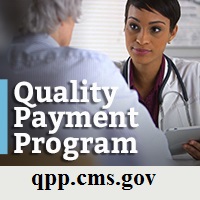 Proposed rule aims to simplify reporting requirements and offer support for doctors and clinicians in 2018
Proposed rule aims to simplify reporting requirements and offer support for doctors and clinicians in 2018
[content_box type=”without-header” text_color=”dark” color=”default”]
Join HITECH Answers and SA Ignite on Tuesday, June 27 at 3 pm Eastern for a Special ABCs of MIPS webinar where we review the details of the proposed rule. Learn More [/content_box]
The Centers for Medicare & Medicaid Services (CMS) issued a proposed rule that would make changes in the second year of the Quality Payment Program as required by the Medicare Access and CHIP Reauthorization Act of 2015 (MACRA). CMS’s goal is to simplify the program, especially for small, independent, and rural practices, while ensuring fiscal sustainability and high-quality care within Medicare.
“We’ve heard the concerns that too many quality programs, technology requirements, and measures get between the doctor and the patient,” said CMS Administrator Seema Verma. “That’s why we’re taking a hard look at reducing burdens. By proposing this rule, we aim to improve Medicare by helping doctors and clinicians concentrate on caring for their patients rather than filling out paperwork. CMS will continue to listen and take actionable steps towards alleviating burdens and improving health outcomes for all Americans that we serve.”
The Quality Payment Program, updated annually as part of MACRA, is meant to promote greater value within the healthcare system. Clinicians who participate in Medicare serve more than 57 million seniors. Clinicians can choose how they want to participate in the Quality Payment Program based on their practice size, specialty, location, or patient population.
The proposed rule would amend some existing requirements and also contains new policies for doctors and clinicians participating in the Quality Payment Program that would encourage participation in either Advanced Alternative Payment Models (APMs) or the Merit-based Incentive Payment System (MIPS). Additionally, CMS has used clinician feedback to shape the second year of the program. If finalized, the proposed rule would further advance the agency’s goals of regulatory relief, program simplification, and state and local flexibility in the creation of innovative approaches to healthcare delivery.
Moreover, CMS is making it easier for rural and small providers to participate.
Resources:
- Fact Sheet
- Download the proposed rule (CMS-5522-P) from the Federal Register
- For more information about the Quality Payment Program, please visit: qpp.cms.gov
